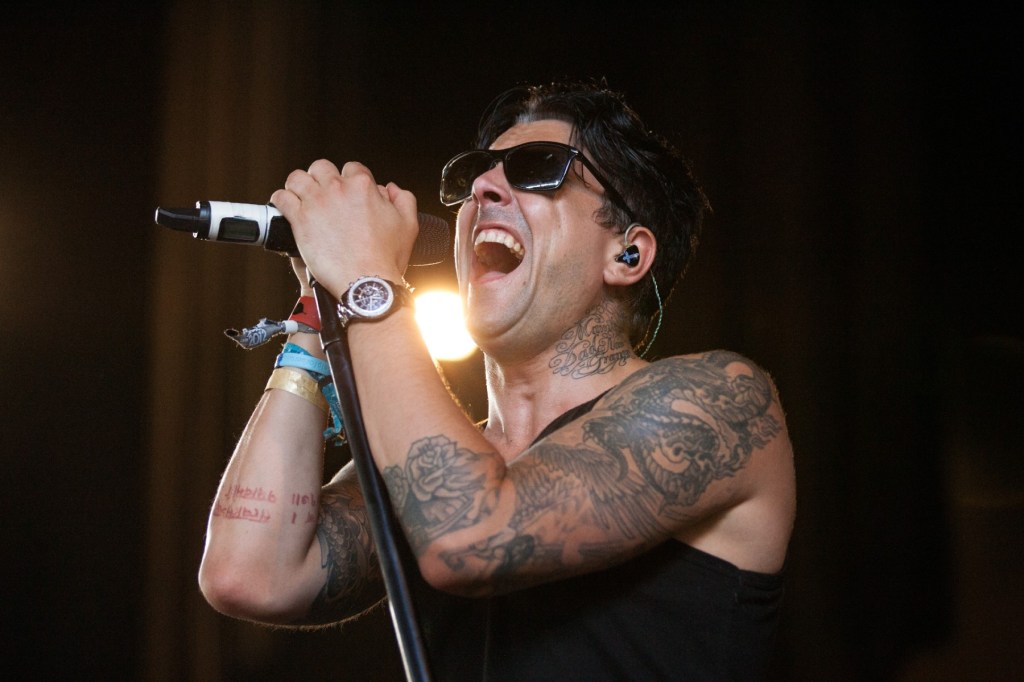Ian Watkins, the former lead singer of rock band Lostprophets and a convicted pedophile, was killed in a prison attack in the United Kingdom. He was 48.
Watkins died on Saturday (Oct. 11) after being stabbed by another inmate at…

Ian Watkins, the former lead singer of rock band Lostprophets and a convicted pedophile, was killed in a prison attack in the United Kingdom. He was 48.
Watkins died on Saturday (Oct. 11) after being stabbed by another inmate at…

Diane Keaton, one of the best-loved film stars of the past 50 years, has died at the age of 79 in California.
The news was confirmed by People magazine. Further details are not available at this time, and her loved ones have asked for privacy,…

On Friday 31 October, Sydney couple Liana and Tim will dress their nephews up in skeleton and dinosaur costumes to get married at the New South Wales registry. Liana will wear a black dress and veil and Tim has bought some Dracula fangs.
The…

Martha Stewart is reportedly undergoing cosmetic procedures to attract younger men.
An insider told Radar Online that the main reason behind the 84-year-old…

Livestock analyst Jim Wyckoff reports on global pig news
Lean hog futures were in a pause mode at mid-week. Last week’s price downdraft did produce serious near-term chart damage to suggest a market top is in place. Selling interest was limited Wednesday due to the rallies in the cattle futures markets and due to lean hog futures’ discounts to the cash hog index. Cash and fresh pork fundamentals have been weakening. The latest CME lean hog index is down 60 cents at $101.42. Today’s projected cash hog index is down another 72 cents at $100.70. Wednesday’s national direct 5-day rolling average cash hog price quote is $98.35.
Declines to key markets offset gains in Asia, America
US pork exports in July were 552 million pounds, 3% below shipments in July 2024, according to the US Department of Agriculture’s Livestock, Dairy, and Poultry Outlook for September. The salient dynamic of July 2025 exports—shown in the listing of the 10 largest foreign July buyers of US pork—is that the 11% year-over-year decline in shipments to Mexico—re-enforced by additional decreases in shipments to Canada, China and Hong Kong, and Australia—were together unable to be offset by small export increases to South Korea, the Philippines, and other Western Hemisphere nations. A variety of reasons could account for lower US exports to Mexico in July, among them more competition from other pork-exporting countries and regions, and higher Mexican beef consumption. Pork export forecasts for the second half of 2025 are unchanged from last month, as are the forecasts for the first half of 2026.
CoBank warns tight space, weak China trade add market risk
The US is bracing for a record grain harvest totalling 21.5 billion bushels of corn, soybeans and grain sorghum this fall, according to a recent market report from CoBank. The bumper crop arrives during a period of heightened uncertainty surrounding the future of the US trade relationship with China, low export market demand for US soybeans and depressed crop prices. Meanwhile, grain storage and transportation logistics are shaping up to be much more complicated than usual. According to a new report from CoBank’s Knowledge Exchange, grain storage space will be extraordinarily tight this fall with grain merchandisers charging higher fees due to limited capacity and strained infrastructure. While grain elevators stand to benefit from buying cheaper basis and capturing wider carries in the futures markets, the profit opportunities are not without risk.
“The challenge for elevators will be prioritizing scarce grain storage,” said Tanner Ehmke, grains and oilseeds economist with CoBank. “Among the top 12 corn-producing states, the US is facing a 1.4-billion-bushel shortage of upright grain storage this year with elevators relying more on bunkers and emergency storage like ground piles. This year’s shortage stands in stark contrast to last year when those states had a combined 361 million bushels of excess storage.”
July shipments flat as 57% duty cuts export value 13%
Despite a total tariff rate of 57%, US pork shipments to China – which are mostly variety meat – were steady with last year at 36,461 mt in July, according to data released by USDA and compiled by the US Meat Export Federation (USMEF). The heightened tariff rate (which was 37% at this time last year) weighed on export value, which was down 13% to $77.6 million. For January through July, exports to China were 16% below last year in volume (218,005 mt) and 17% lower in value ($513.3 million), but this was mainly due a sharp drop in exports in April and May, when US pork was subject to prohibitively high tariff rates.
The next week’s likely high-low price trading ranges:
You don’t have permission to access “http://www.news18.com/world/rattled-pakistan-objects-to-india-afghan-joint-statement-rejects-terror-claims-exclusive-details-9630189.html” on this server.
Reference…
Self-management is an important approach to mitigating the impact of long-term disorders. Self-management enables people with ongoing conditions to “make informed choices, adopt a new perspective and generic skills that can be applied to new…

Apple appears to be winding down support of Clips, with the company removing Clips from the App Store and saying it will no longer be making any updates.
In a support page on the Apple website, the company says that as of October 10, Clips is…